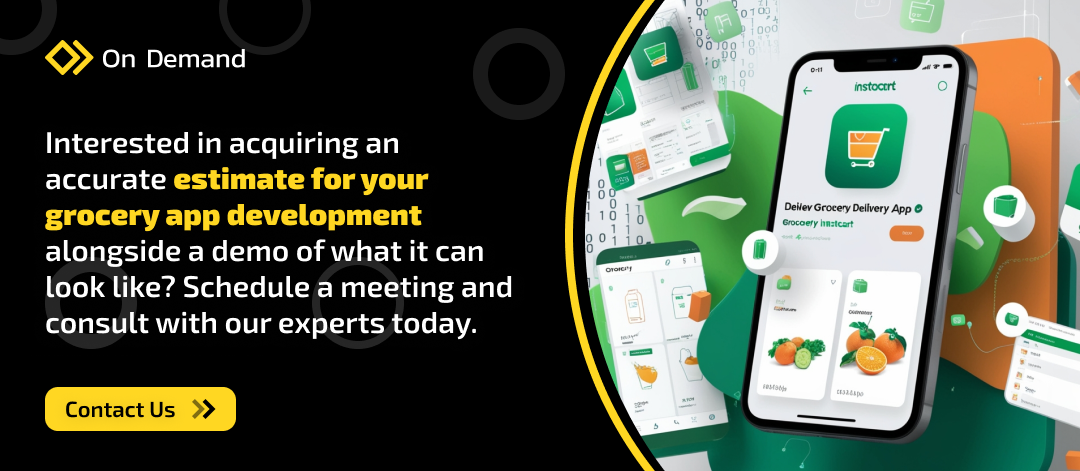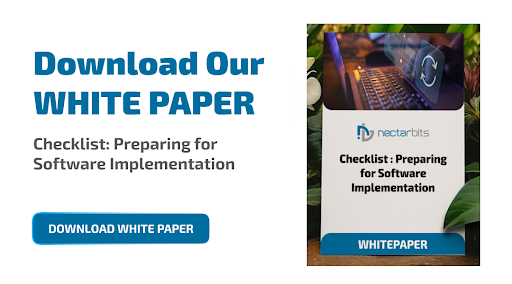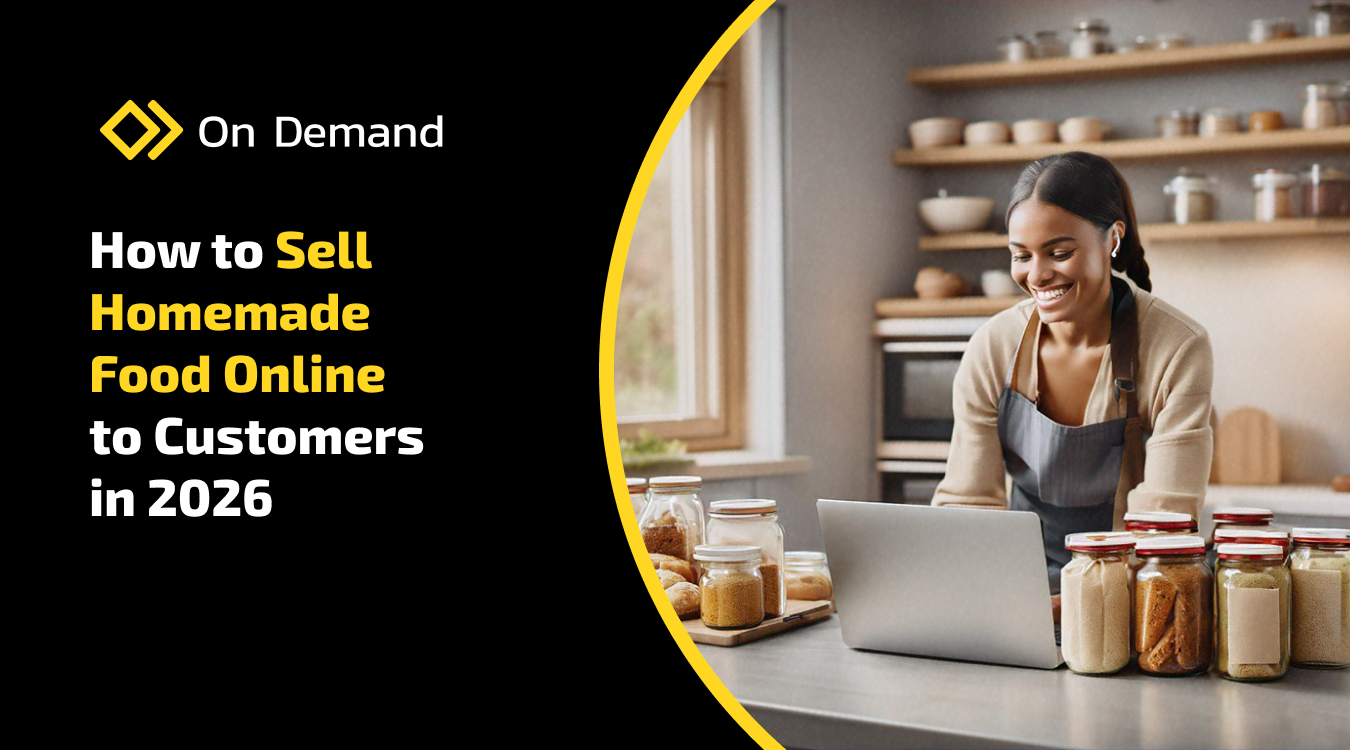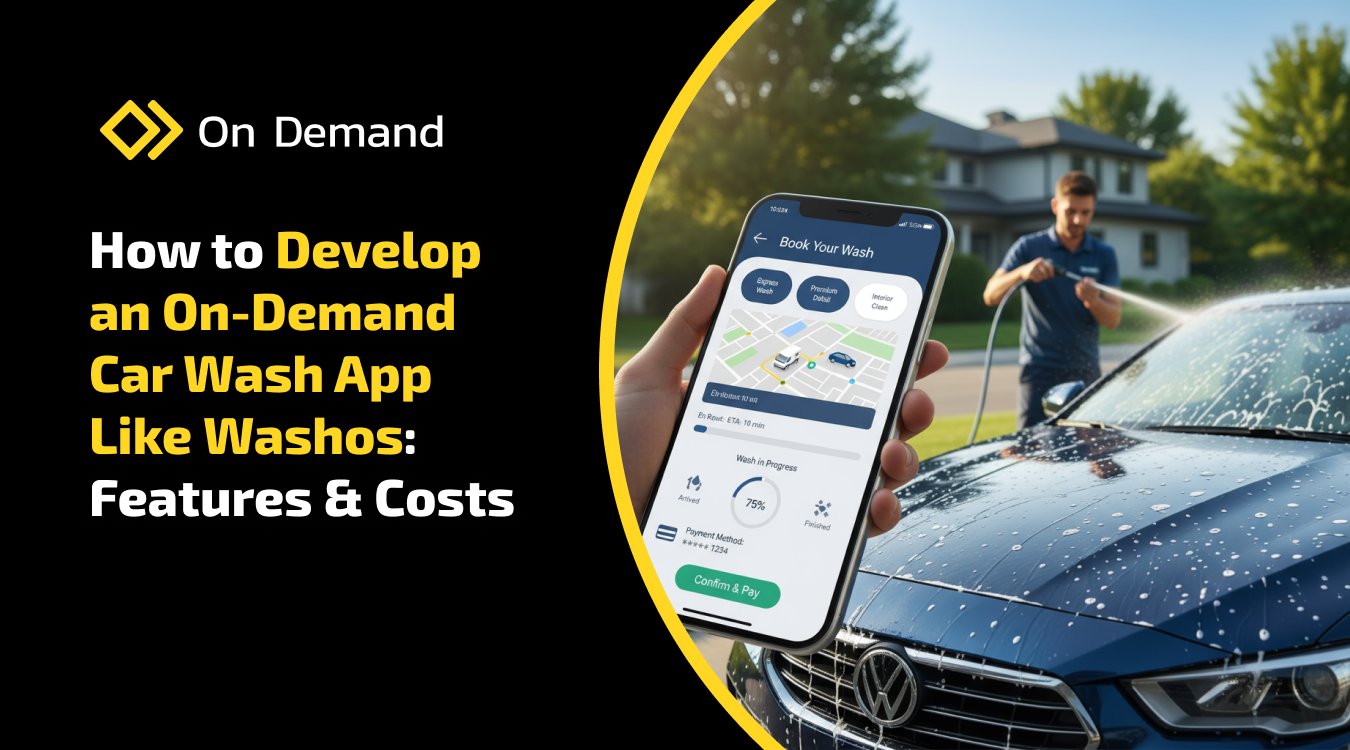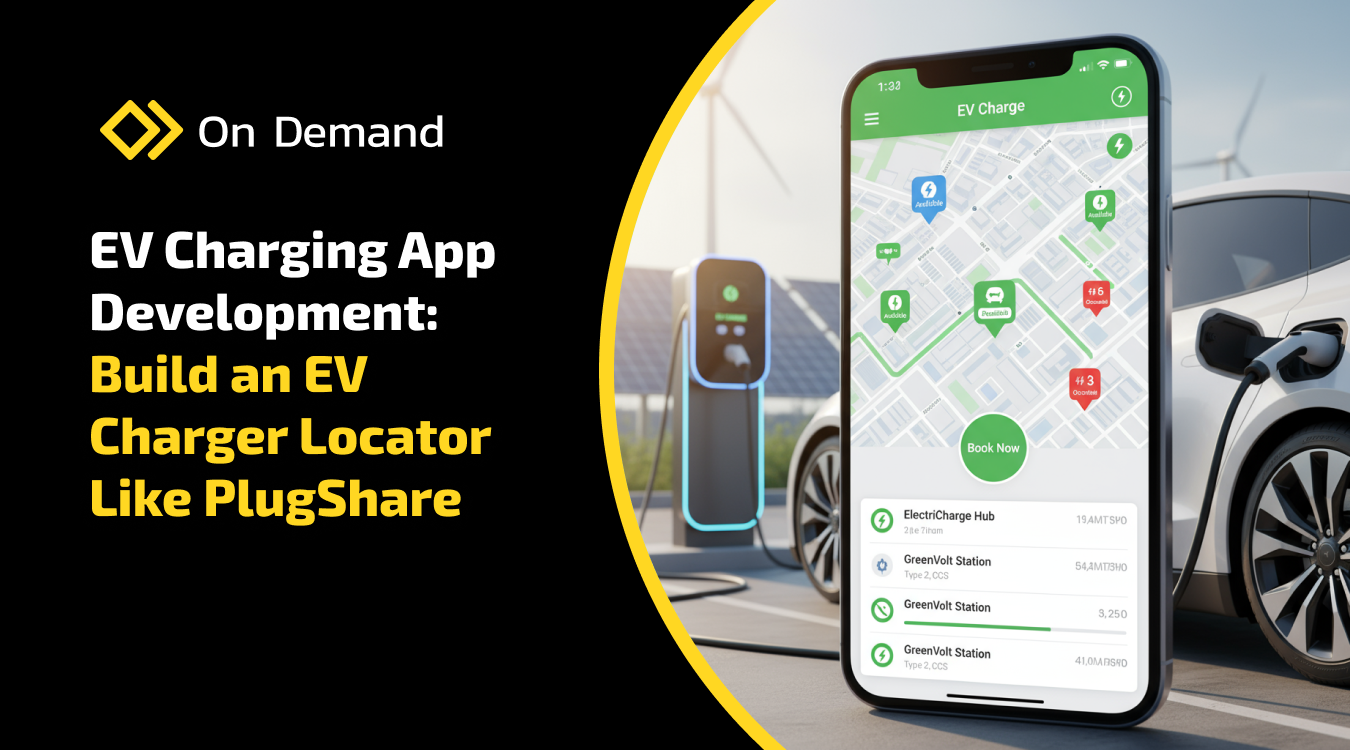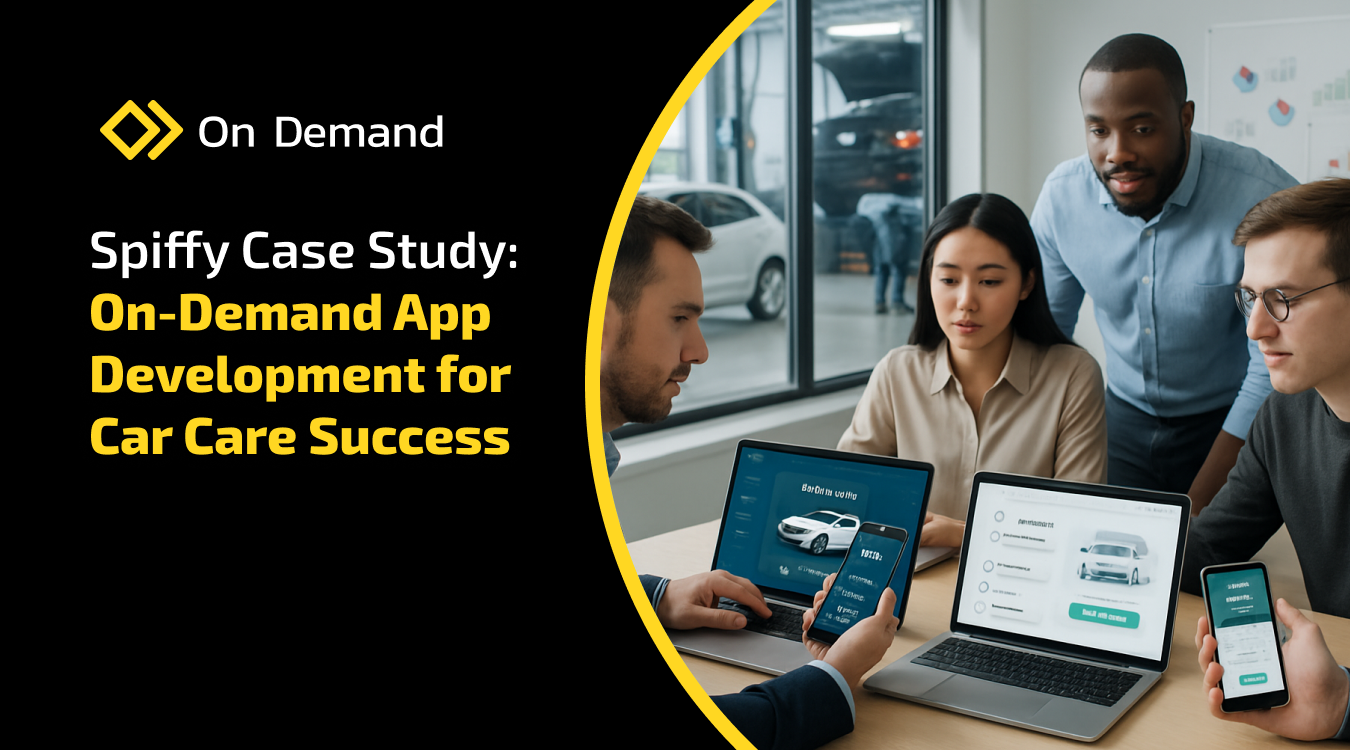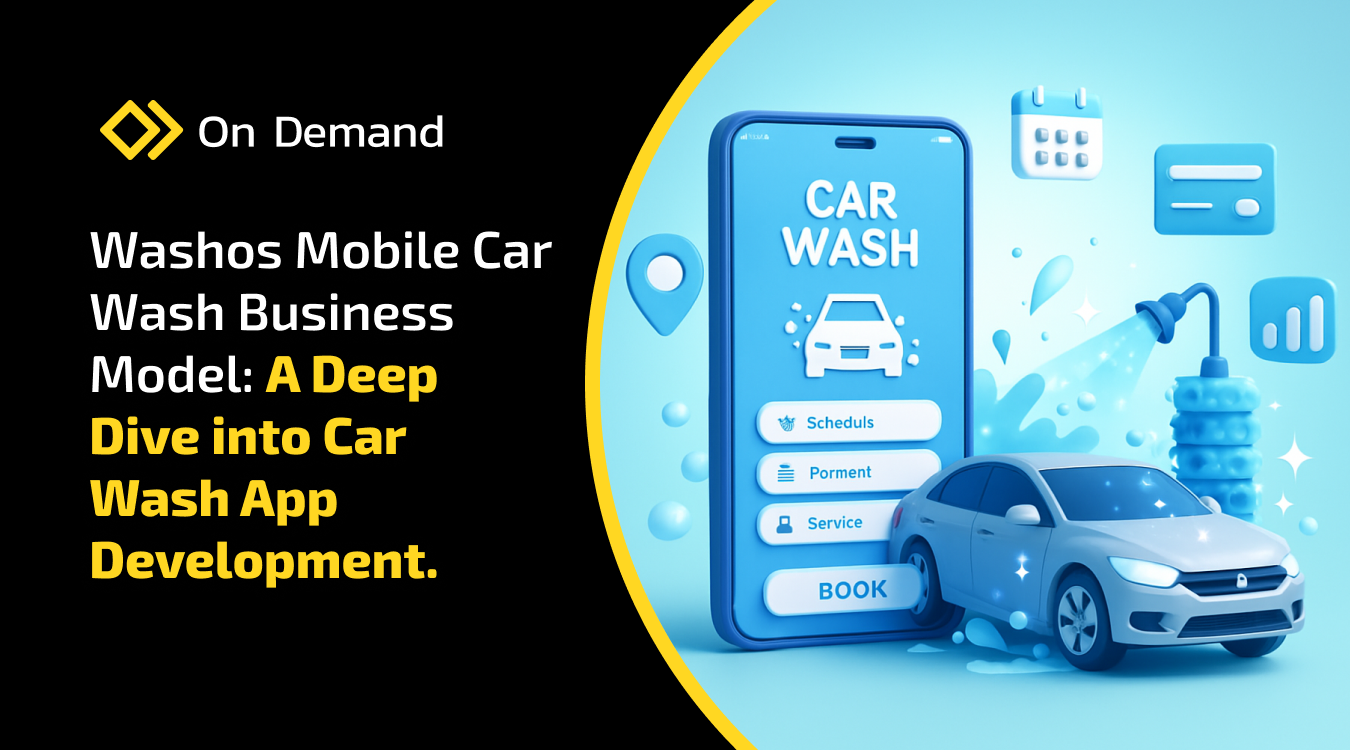Posted At: Sep 06, 2024 - 18,066 Views
10 minutes to read

Recent years have seen the online grocery delivery app market explode in popularity as people change their buying habits to suit the e-commerce model. Platforms like Instacart have revolutionized the on-demand grocery delivery app development industry. Making it possible to order your everyday groceries from the comfort of your household, there is a growing demand for similar apps in various markets. This has led to the development of many Instacart Clone Apps as companies try to capitalize on this growing trend globally.
With on-demand grocery app development facing various challenges during its complicated development process, and strong competition against similar Instacart clone apps in the market, developing a clear strategy is paramount for your grocery apps' survival. Thus, we have developed this comprehensive guide to ensure you create a robust, sustainable, and successful product.
Current Grocery App Market Landscape
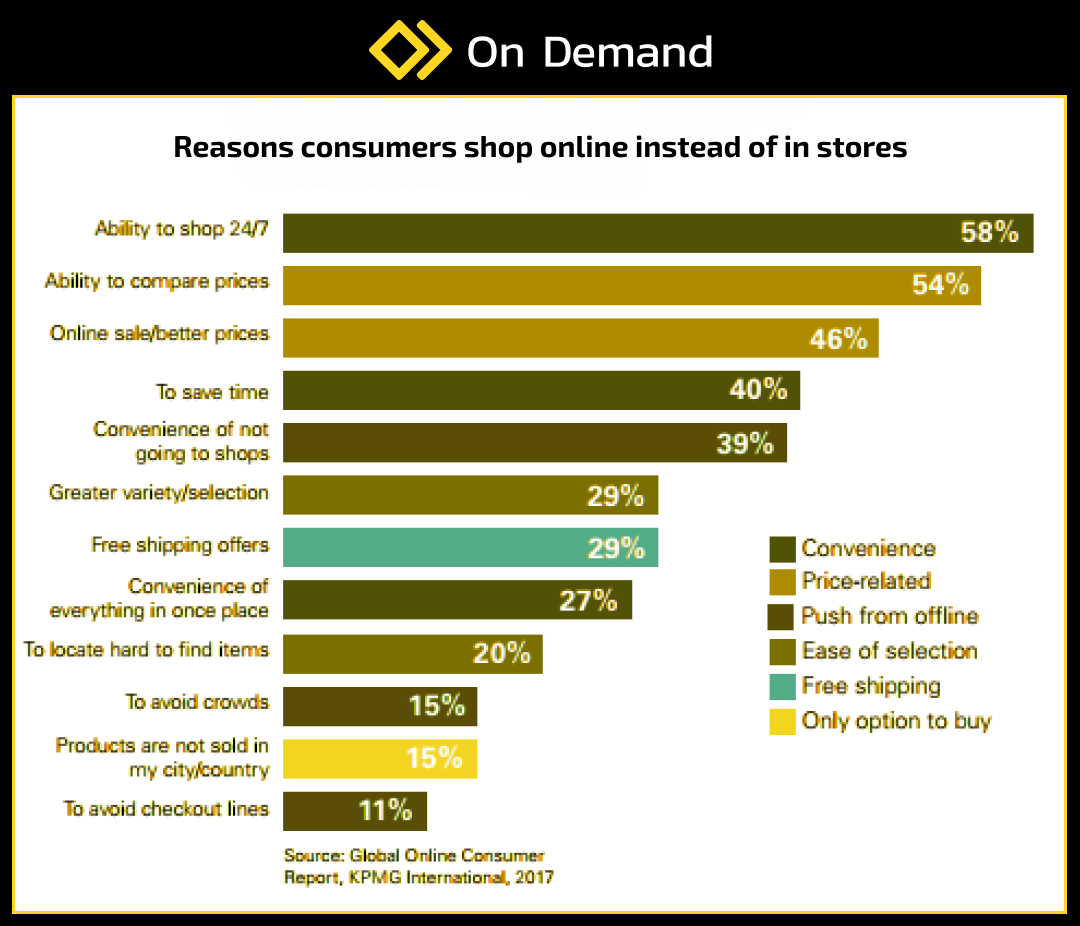
The grocery delivery app has seen a significant rise in popularity due to the lifestyle changes in users worldwide during the pandemic and the advancements in online commerce and logistics. According to a report by Statista, the online grocery market in the US alone is expected to reach $187.7 billion by the end of 2024, an incredible growth from its revenue of $95.8 billion in 2020.
Top Grocery Apps in the Market
Apart from the monopoly of Instacart as an ideal example of great on-demand grocery app development, we have other significant players in the market that include:-
- Amazon Fresh: Provides a wide variety of grocery items delivered within hours, powered by the technical prowess of Amazon’s e-commerce supply chain.
- Walmart Grocery: One of the largest retail grocery brands offers delivery and pickup options to ensure it doesn’t fall behind the growing trend of online shopping.
- Shipt: A membership-based service that promises a personalized grocery delivery app experience with tailored recommendations that save time.
Essential Features of a Grocery Delivery App
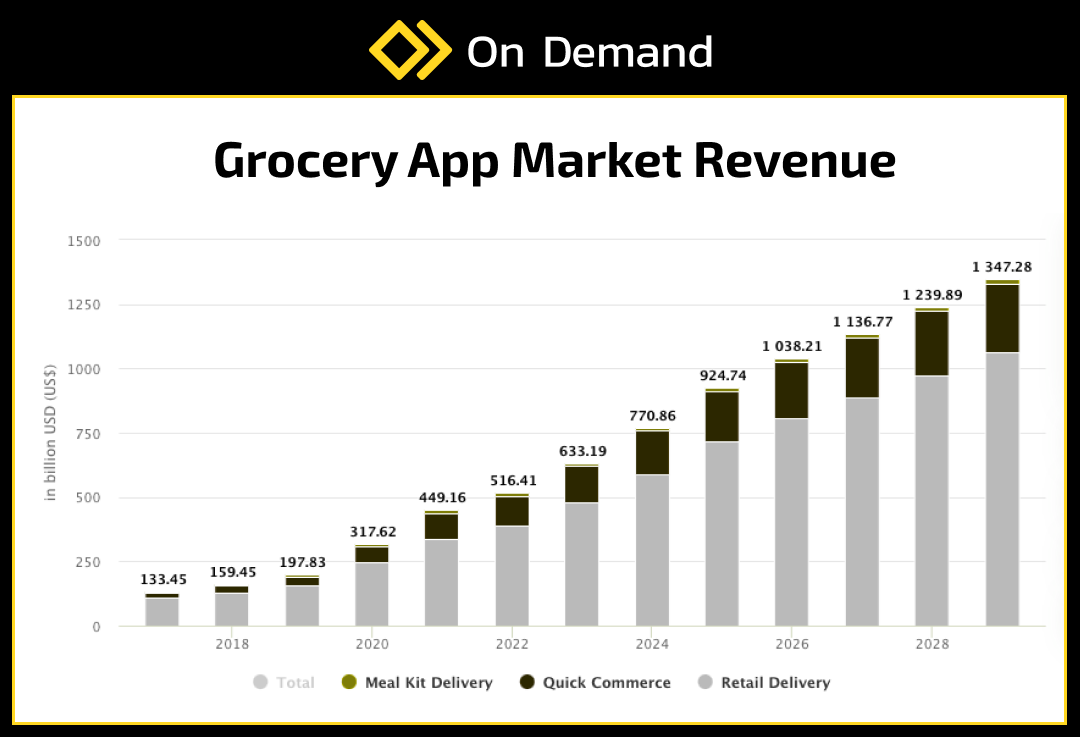
Developing a uniquely positioned grocery delivery app like Instacart requires your app to be highly competitive and inclusive of the latest market trends that define the online service's viability. Here are key elements to consider while overlooking your on-demand grocery app development.
- User registration and profile management
User convenience begins with registration and creation of an account and modifications to the accounts. Users should be able to register with the platforms with an email address, phone contact, or even social accounts. The profiles, such as their personal, address, and payment information, should be easily manageable for the users. This makes your white-label delivery app solution incredibly reliable and personalized for the user.
- Product Search and Filtering
The application should include a suitable search and filter mechanism through which the user can search for products. Some enhancements include category search, name search by category, and refined options that allow sorting by type of food, organic foods, and Gluten-Free Foods, among others.
- Real-Time Order Tracking
One of the main perks of creating an on-demand grocery delivery app is the option to track orders as they happen. Users should be able to monitor the location of their orders from the time they order them until they are delivered. This feature enhances transparency and gives users confidence in using the applications.
Read More:- Discover the Ultimate Technology Stack for On-Demand Apps: Key Components & Tools
- Multiple Payment Options
Accepting multiple payment devices, such as cards, wallets, and COD, is also critical for customer satisfaction. To gain customers' confidence, transaction protection and encryption are necessary.
- Reviews and Ratings
Enabling customers to rate products and services, delivery personnel, and service delivery generally ensures high service standards and provides information needed to enhance your grocery delivery app’s service quality.
- Customer Support
Include good customer support in the app, where people get the first automated solutions via chatbots and complex ones provided by people. It is particularly important to answer customers’ questions and inquiries and consider their complaints.
Technology Stack for Grocery Delivery App Development
Choosing the correct technology stack for your Instacart clone app development is paramount to ensure the success of your custom grocery delivery app development and prepare it for a scalable future. Here are some of our recommended technologies for building the perfect grocery delivery app suitable for your business:-
| Component | Technology |
| Frontend Development | React Native, Flutter, Angular |
| Backend Development | Node.js, Python, Ruby on Rails |
| Database | MongoDB, PostgreSQL, MySQL |
| Cloud Services | AWS, Google Cloud, Microsoft Azure |
| Payment Gateways | Stripe, PayPal, Braintree |
| Real-time Tracking | Google Maps API, Mapbox |
Development Costs of a Grocery Delivery App
The cost of developing a grocery delivery app like Instacart can vary based on the complexity of features and the geographical location of your development team. Here is a complete breakdown of your estimated costs for the different components of the app you will require for your grocery app development:-
| App Component | Estimated Cost (USD) |
| UI/UX Design | $5,000 - $15,000 |
| Frontend Development | $20,000 - $50,000 |
| Backend Development | $25,000 - $60,000 |
| API Integration | $10,000 - $25,000 |
| Quality Assurance | $10,000 - $30,000 |
| Deployment and Maintenance | $5,000 - $20,000 |
| Total | $75,000 - $200,000 |
While these figures are approximate and can vary depending on the project's scope and the requirements you present, they give you a rough idea of what you can expect when strategizing your grocery app development budget.
Case Study: Rise of Instacart and Takeaways from its Success
The incredible success of Instacart as a rapidly popular grocery delivery app, with up to 218% increase in its downloads year-on-year and dominating performance against competitive apps like Walmart and Shipt, is an ideal on-demand grocery app development to learn from. While other apps grew with the trend, Instacart’s unique success is due to salient benefits and strategies that set it apart.
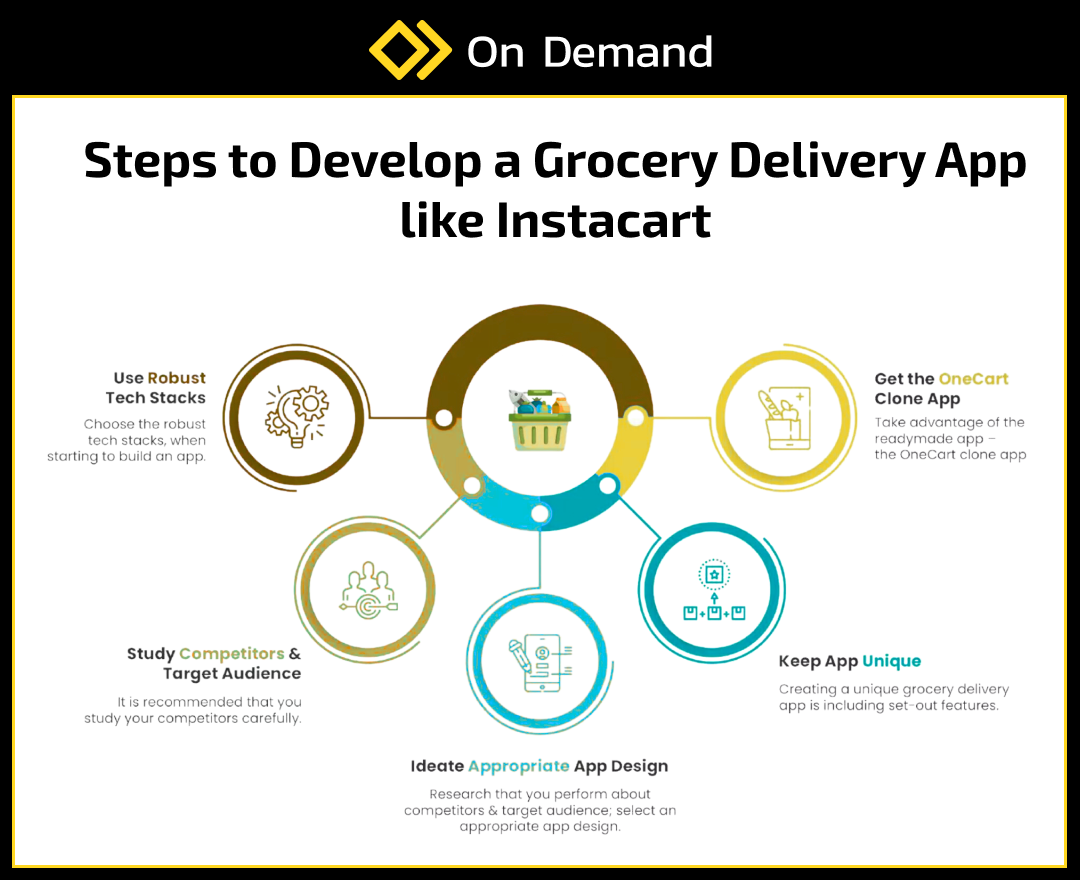
Developmental Strategies That Set Instacart Apart
Three-Tier Strategy Based on the No-Inventory Model
Instacart's initial approach was straightforward yet innovative: it started with companies offering groceries, household products, and ready meals that were directly delivered from shops. In 2017, after a major expansion, Instacart extended to 150 new areas and started operating in Canada, working with various chains and providing rather nice offers.
A key to Instacart’s early prominent position is to be sought in its strategic concept. Instacart differs from conventional retail businesses since it does not store or own the products it sells but connects consumers through the application. This eliminates the call for Instacart to invest heavily in inventory, keeping this reduced greatly, and instead invest in improving the delivery services and the fastest way of expanding the services to other areas.
Unique Features Innovated by Instacart
While the service excelled in the standard requirements of typical on-demand grocery app solutions, Instacart app development went further to incorporate innovative features that set them apart. These include:-
- Save Shopping List: Once the items are saved, users can plan to buy them on a different one-stop shopping trip.
- Reordering from Past Orders: One of Instacart's most efficient features is the ability to reorder, which makes it easier to place an order to buy particular products.
- Nutritional Information: People can read the nutritional information of each product, which enables them to make their choices.
- In-App Chat with Shoppers: This feature allows the user to make direct contact with shoppers and provide up-to-date information or individual order requests.
- Diet-Specific Filters: The products are also sorted by diet type, for instance, gluten-free, organic, vegan, etc.
- Same-Day Delivery: One of the important requirements that meet the needs and desires of active consumers by providing grocery delivery as soon as possible.
Instacart’s Profitable Strategic Partnerships
Understanding the significance of partnerships in on-demand grocery app development, Instacart worked with several stores and enabled them to sign up for the application and operate through their brand on the platform. Although useful in broadening Instacart’s offerings, it also allowed stores to access more consumers at low additional costs.
Other than affiliating with independent sellers, it also formed affiliations with famous brands and services, including the following: For instance, getting an agreement with Sam’s Club helped Instacart expand its service to same-day alcohol delivery. Likewise, engagement with Postmates in the San Francisco area ensured that the business delivered orders within the shortest time during rush hour, therefore improving clients’ satisfaction.
Instacart’s Monetization Strategies for Grocery Delivery App Development
Learning and implementing these strategies within your grocery delivery app development is paramount if you have ever wondered what makes this platform so financially sustainable and profitable. To generate revenues and make profits, Instacart operates under a complex model to monetize its services. Here’s a breakdown of the five key strategies Instacart uses to generate revenue:
- Delivery Fee: Instacart charges for delivery depending on when the customer wishes the groceries to be delivered. The customer will be expected to pay $3.99 for same-day orders over $35, while the fees vary for one-hour deliveries.
- Markup Fee: Instacart earns a markup fee from stores that list their products at a higher price on the application than their retail price. Instacart takes 20% of the revenues from these stores.
- Service Fee: Every order is subject to a mandatory service charge of 5%, which contributes to Instacart’s revenue stream.
- Membership Fee: Instacart currently charges $9.9 for its Plus subscription service, which offers members-only features such as priority delivery and flat rates for orders of $35 and above.
- Partner Payments: From patronizing small and medium enterprises and various brands, Instacart is commissioned and paid by partners to incorporate their services on the platform.
- Price Surge: Instacart raises delivery fees during normal rush hour or when many people shop on weekends or special occasions.
Instacart’s success is a great example of optimized custom grocery delivery app development and promotes the benefits of creating your own grocery delivery app for quicker ROIs.
Future Trends in Grocery Delivery App Development
The ever-expanding grocery delivery app development continuously evolves with new technologies and trends shaping the industry's future. Some of these bleeding-edge trends include:-
- AI and Machine Learning
Artificial intelligence and ML are being used to revolutionize the way on-demand grocery apps are developed, using personalized recommendations and optimized delivery routes to integrate the magical power of AI deep within grocery delivery app development.
- Integration with Smart Devices
Utilizing the power of IoT devices, grocery delivery apps, and even Instacart clone app development can enhance its functionality by providing a seamless shopping experience. For instance, users can use voice commands through services like Alexa or Google to order their favorites without even using the app.
- Environmental initiatives
Consumers can become more concerned with the environment and its impact on their shopping habits. Ensuring eco-friendly delivery options for your grocery delivery app development can allow electric vehicle fleet deliveries and reusable packaging options to ensure more environmentally conscious consumers.
Read More:- Top 7 Challenges to Tackle in Custom Software Development - Nectarbits
Conclusion: Harnessing Instacart’s Playbook for Your Grocery App
Under these circumstances, Instacart’s story is rather inspiring and contains numerous important pieces of advice for those involved in grocery delivery app development. By concentrating on the novel concept, integrating new options, and proving cooperation with essential companies, Instacart has established the bar for rivals. For more new entrants to online grocery services, the case study of Instacart and this guide can be instrumental in its mechanism and success path.
Frequently Asked Questions (FAQs)
1. What is a grocery delivery app, and why is it becoming so popular?
A grocery delivery app is a mobile application that allows users to order groceries online and deliver them to their doorstep. This convenience and the shift in consumer behavior towards e-commerce are driving the popularity of these apps. People are increasingly looking for ways to save time and avoid the hassle of in-store shopping, especially after the pandemic highlighted the need for contactless shopping solutions.
- Benefits of Grocery Delivery Apps:
- Time-saving and convenience
- Avoiding crowded places
- Access to a wide range of products
- Real-time order tracking
- Multiple payment options
2. How can I start Instacart clone app development?
To start Instacart clone app development, you need to understand the features that make Instacart successful and integrate them into your app. Focus on building a user-friendly interface, robust backend, and secure payment system. Partner with local stores and ensure timely delivery with real-time tracking features.
- Steps for Development:
- Identify your target market and research their needs
- Choose the right tech stack (React Native, Node.js, etc.)
- Design an intuitive UI/UX
- Implement core features like product search, order tracking, and payment integration.
- Test thoroughly and launch with a marketing plan.
3. What are the essential features of a custom grocery delivery app?
A custom grocery delivery app should include features like user registration, product search, real-time order tracking, multiple payment options, and customer support. These features ensure a seamless user shopping experience and help build customer loyalty.
- Key Features to Include:
- User profile management
- Advanced search and filter options
- Order history and reordering
- Reviews and ratings system
- In-app chat support
- Push notifications for order updates
4. What technology stack is best for grocery delivery app development?
The technology stack for grocery delivery app development should be chosen based on your needs and the app's complexity. Common choices include React Native or Flutter for the frontend, Node.js or Ruby on Rails for the backend, and MongoDB or MySQL for the database.
- Recommended Tech Stack:
- Frontend: React Native, Flutter
- Backend: Node.js, Ruby on Rails, Python
- Database: MongoDB, MySQL, PostgreSQL
- Cloud Services: AWS, Google Cloud
- Payment Gateways: Stripe, PayPal
5. How much does developing a grocery delivery app like Instacart cost?
Developing a grocery delivery app can cost between $75,000 and $200,000. This cost includes UI/UX design, frontend and backend development, API integration, quality assurance, and deployment.
- Cost Breakdown:
- UI/UX Design: $5,000 - $15,000
- Frontend Development: $20,000 - $50,000
- Backend Development: $25,000 - $60,000
- API Integration: $10,000 - $25,000
- Quality Assurance: $10,000 - $30,000
- Deployment and Maintenance: $5,000 - $20,000
These elements highlight the features and potential of grocery delivery app development, using the specified keywords and engaging language to attract and inform the target audience.
